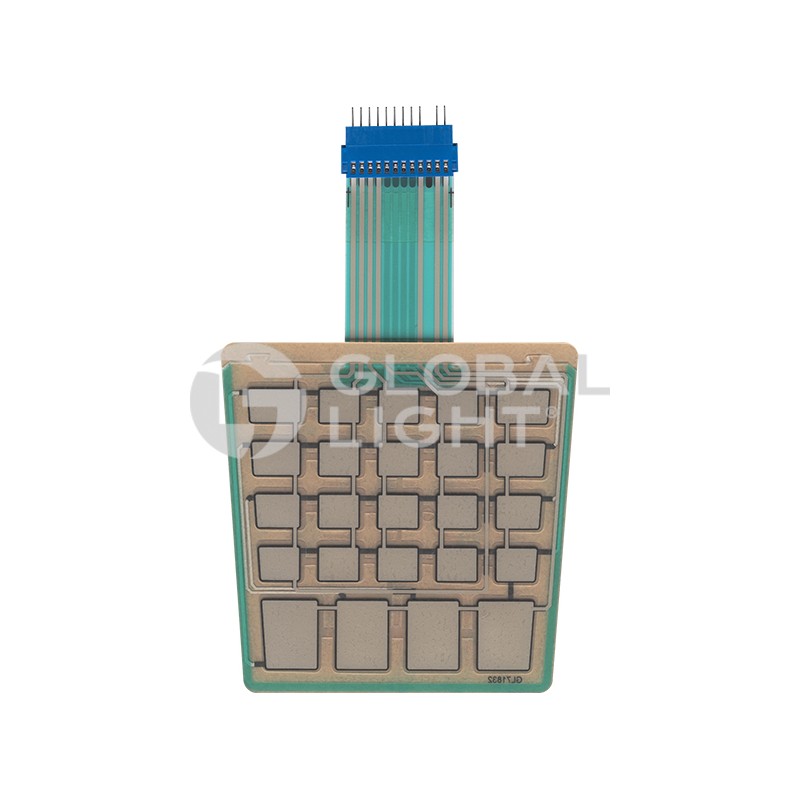Recognizing Membrane Layer Changes: The Key to Long Lasting and Dependable Controls

What Are Membrane Switches?
Membrane layer buttons are an advanced solution in the realm of interface modern technology, incorporating capability and layout flawlessly. These gadgets act as an interface in between users and digital systems, integrating a number of elements into a small format. Usually constructed from versatile, slim layers of materials, membrane buttons are created to reply to touch, making it possible for individuals to communicate with machinery and digital tools properly.
The primary elements of a membrane button consist of a published circuit layer, graphic overlay, and a spacer layer that stops unintended activation. The graphic overlay can be customized to show brand name identification or individual choices, improving aesthetics while making sure usability. Membrane switches are typically made use of in various applications, consisting of clinical devices, consumer electronic devices, and commercial equipment, owing to their resilience and resistance to ecological variables such as moisture and dust.
Among the crucial benefits of membrane switches is their capability to withstand wear and tear, making them perfect for high-traffic settings. Furthermore, they are light-weight and call for marginal space, permitting for innovative designs in item advancement. Generally, membrane changes represent a efficient and practical choice for modern digital user interfaces, marrying modern technology with user-centric layout concepts.
Exactly How Membrane Layer Switches Work
The procedure of membrane switches over hinges on a simple yet reliable device that translates individual input into digital signals. When a user presses the switch, the top layer warps, allowing a conductive element in the circuit layer to make call with a matching conductive pad on the underside of the visuals overlay.
The design of membrane layer switches can vary, yet they frequently integrate domes or responsive elements to provide feedback to the individual, enhancing the overall experience - membrane switch. The materials made use of in membrane layer switches, such as polyester or polycarbonate, add to their resilience and resistance to ecological elements, consisting of moisture and dirt. In addition, the published circuits are typically encapsulated, which safeguards them from wear and tear gradually.
Benefits of Membrane Layer Switches

In addition, membrane layer buttons are understood for their sturdiness. Built from durable materials, they are resistant to dust, wetness, and physical wear, which significantly expands their life expectancy compared to typical mechanical buttons. This resilience makes them specifically ideal for high-traffic environments and applications calling for longevity.
An additional significant benefit is the ease of cleaning and upkeep. The smooth surface of membrane switches over lessens dust build-up and is typically resistant to spills, making great post to read them suitable for settings that call for frequent sanitization.
Additionally, membrane switches use a streamlined account, resulting in a thinner layout that can be integrated into various tools without adding bulk. This attribute not just enhances the visual allure however additionally adds to an extra ergonomic item style.
Applications of Membrane Layer Buttons
Functional and easy to use, membrane buttons discover applications throughout a large range of industries, including clinical devices, consumer electronic devices, and industrial devices. In the discover here medical field, these switches are integral to gadgets such as diagnostic tools, client tracking systems, and infusion pumps, where reliability and simplicity of cleansing are crucial. Their ability to stand up to extreme atmospheres and keep functionality makes them excellent for such applications.

In customer electronic devices, membrane layer switches are made use of in items like microwaves, washing devices, and push-button controls - membrane switch. Their streamlined design permits for instinctive interface, improving the overall customer experience while offering longevity and resistance to tear and put on
Commercial equipment likewise profits from membrane layer switches, particularly in control panels for equipment and automation systems. These switches provide security versus dust and wetness, making Learn More certain consistent performance in tough settings. Additionally, their customizable features permit suppliers to tailor them to specific functional demands, boosting performance and capability.
Picking the Right Membrane Switch Over
When choosing a membrane layer switch, it is vital to take into consideration numerous aspects that influence performance and suitability for specific applications. The key considerations consist of environmental problems, responsive feedback, toughness, and style requirements.
First, examine the operating atmosphere; switches exposed to dampness, chemicals, or extreme temperatures call for details products to guarantee durability and performance. Next, examine the requirement for responsive responses. Depending on individual interaction, some applications might take advantage of a responsive feedback to verify activation, while others might prefer a non-tactile design for aesthetic factors.
Sturdiness is an additional important variable; membrane switches must be created to endure constant usage, impacts, and abrasion. Ensure the selected button can withstand the anticipated lifecycle, specifically in high-usage scenarios.

Final Thought
In final thought, membrane layer switches over serve as important components in the layout of trustworthy and resilient control systems across different markets. The versatility of membrane switches over enables for tailored remedies that meet specific functional demands, enhancing their importance in modern innovation.
Membrane layer switches over represent an essential element of contemporary user interface style, blending performance with durability in various applications.Membrane layer switches are an innovative remedy in the realm of customer interface technology, incorporating functionality and design perfectly. Typically constructed from adaptable, thin layers of products, membrane switches are designed to respond to touch, making it possible for individuals to interact with equipment and digital tools properly.
The style of membrane layer buttons can differ, but they frequently include domes or tactile aspects to give feedback to the user, enhancing the overall experience.In conclusion, membrane switches serve as crucial parts in the design of durable and trustworthy control systems across various markets.